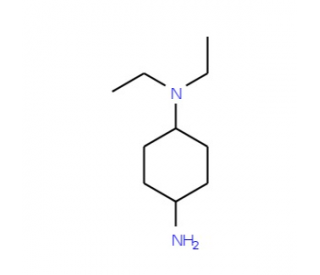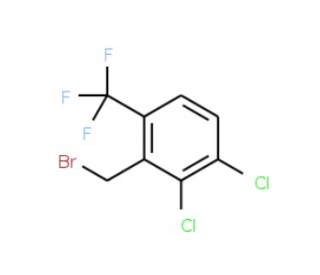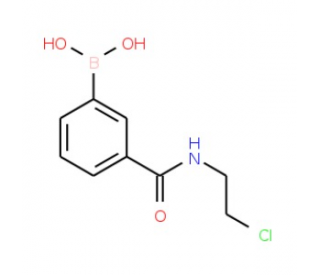詳細說明
Purity
>90%, by SDS-PAGE under reducing conditions and visualized by silver stain
Endotoxin Level
<0.01 EU per 1 μg of the protein by the LAL method.
Activity
Measured by its binding ability in a functional ELISA. Immobilized rrNpn-1/Fc Chimera at 2 μg/mL (100 μL/well) can bind rhVEGF 165 in the presence of 2 μg/mL of heparin with an apparent K D <1 nM.
Source
Mouse myeloma cell line, NS0-derived
Rat Neuropilin-1
(Phe22 - Ala810)
Accession # Q9QWJ9R Rat Neuropilin-1
(Ser829 - Asp854)
Accession # Q9QWJ9IEGRDMD Human IgG1
(Pro100 - Lys330)6-His tag N-terminus C-terminus R&D Systems rat Npn-1 may represent a previously unreported splice isoform of rat Npn-1.
Accession #
N-terminal Sequence
AnalysisPhe22
Structure / Form
Disulfide-linked homodimer
Predicted Molecular Mass
119 kDa (monomer)
SDS-PAGE
130-150 kDa, reducing conditions
566-NNS |
| |
Formulation Lyophilized from a 0.2 μm filtered solution in Citrate Phosphate and NaCl. | ||
Reconstitution Reconstitute at 100 μg/mL in sterile PBS. | ||
Shipping The product is shipped at ambient temperature. Upon receipt, store it immediately at the temperature recommended below. | ||
Stability & Storage: Use a manual defrost freezer and avoid repeated freeze-thaw cycles.
|
Background: Neuropilin-1
Neuropilin-1 (Npn-1, previously neuropilin; also named CD304) is a 130 - 140 kDa type I transmembrane (TM) glycoprotein that regulates axon guidance and angiogenesis (1 - 4). The full-length 922 amino acid (aa) rat Npn-1 contains a 623 aa extracellular domain (ECD) that shares 98% aa identity with mouse and 93% aa identity with human, equine, bovine and canine Npn-1 (3, 4). The ECD contains two N-terminal CUB domains (termed a1a2), two domains with homology to coagulation factors V and VIII (b1b2) and a MAM (meprin) domain (c). In mouse and human, splice variants that lack the TM domain have been described and are either proven or presumed to be soluble antagonists (1, 5 - 7). The sema domains of Class III secreted semaphorins such as Sema3A bind Npn-1 a1a2 (8). Heparin, the heparin-binding forms of VEGF (VEGF165, VEGF-B and VEGF-E), PlGF (PlGF2), and the C-terminus of Sema3 bind the b1b2 region (8, 9). Npn-1 and Npn-2 share 48% aa identity within the ECD and can form homo- and hetero-oligomers via interaction of their MAM domains (1). Neuropilins show partially overlapping expression in neuronal and endothelial cells during development (1, 2). Both neuropilins act asco-receptors with plexins, mainly plexin A3 and A4, to bind class III semaphorins that mediate axon repulsion (10). However, only Npn-1 binds Sema3A, and only Npn-2 binds Sema3F (1). Both areco-receptors with VEGF R2 (also called KDR or Flk-1) for VEGF165 binding (1). Sema3A signaling can be blocked by VEGF165, which has higher affinity for Npn-1 (11). Npn-1 is preferentially expressed in developing or remodeling arteries (1, 2). Npn-1 is also expressed on dendritic cells and mediates DC-induced T cell proliferation (12).
References:
Bielenberg, D.R. et al. (2006) Exp. Cell Res. 312:584.
Gu, C. et al. (2003) Dev. Cell 5:45.
He, Z. and M. Tessier-Lavigne (1997) Cell 90:739.
Soker, S. et al. (1998) Cell 92:735.
Gagnon, M.L. et al. (2000) Proc. Natl. Acad. Sci. USA 97:2573.
Cackowski, F.C. et al. (2004) Genomics 84:82.
Rossignol, M. et al. (2000) Genomics 70:211.
Gu, C. et al. (2002) J. Biol. Chem. 277:18069.
Mamluk, R. et al. (2002) J. Biol. Chem. 277:24818.
Yaron, A. et al. (2005) Neuron 45:513.
Narazaki, M. and G. Tosato (2006) Blood 107:3892.
Tordjman, R. et al. (2002) Nat. Immunol. 3477.
Entrez Gene IDs:
8829 (Human); 18186 (Mouse); 246331 (Rat)
Alternate Names:
BDCA4; BDCA-4; CD304 antigen; CD304; DKFZp686A03134; DKFZp781F1414; neuropilin 1; Neuropilin1; Neuropilin-1; NRP1; NRPNP1; transmembrane receptor; Vascular endothelial cell growth factor 165 receptor; VEGF165RCD304










 粵公網(wǎng)安備44196802000105號
粵公網(wǎng)安備44196802000105號